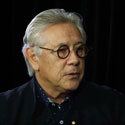One Melbourne Quarter
Melbourne
-
Metrics
You must be a CTBUH Member to view this resource.
Official Name
One Melbourne Quarter
Name of Complex
Type
Building
Status
Completed, 2018
Country
City
Address
Function
A mixed-use tall building contains two or more functions (or uses), where each of the functions occupy a significant proportion of the tower's total space. Support areas such as car parks and mechanical plant space do not constitute mixed-use functions. Functions are denoted on CTBUH "Tallest Building" lists in descending order, e.g., "hotel/office" indicates hotel function above office function.
office
Structural Material
Both the main vertical/lateral structural elements and the floor spanning systems are constructed from steel. Note that a building of steel construction with a floor system of concrete planks or concrete slab on top of steel beams is still considered a “steel” structure as the concrete elements are not acting as the primary structure.
Reinforced Concrete
Both the main vertical/lateral structural elements and the floor spanning systems are constructed from concrete which has been cast in place and utilizes steel reinforcement bars.
Precast Concrete
Both the main vertical/lateral structural elements and the floor spanning system are constructed from steel reinforced concrete which has been precast as individual components and assembled together on-site.
Mixed-Structure
Utilizes distinct systems (e.g. steel, concrete, timber), one on top of the other. For example, a steel/concrete indicates a steel structural system located on top of a concrete structural system, with the opposite true of concrete/steel.
Composite
A combination of materials (e.g. steel, concrete, timber) are used together in the main structural elements. Examples include buildings which utilize: steel columns with a floor system of reinforced concrete beams; a steel frame system with a concrete core; concrete-encased steel columns; concrete-filled steel tubes; etc. Where known, the CTBUH database breaks out the materials used in a composite building’s core, columns, and floor spanning separately.
concrete
Energy Label
6 Star Green Star rating and a 5 star NABERS targeted
Height
71.0 m / 233 ft
Floors Above Ground
13
# of Parking Spaces
156
Tower GFA
34,900 m² / 375,660 ft²
Architect
Usually involved in the front end design, with a "typical" condition being that of a leadership role through either Schematic Design or Design Development, and then a monitoring role through the CD and CA phases.
Structural Engineer
The Design Engineer is usually involved in the front end design, typically taking the leadership role in the Schematic Design and Design Development, and then a monitoring role through the CD and CA phases.
Other Consultant
Other Consultant refers to other organizations which provided significant consultation services for a building project (e.g. wind consultants, environmental consultants, fire and life safety consultants, etc).
Other Consultant refers to other organizations which provided significant consultation services for a building project (e.g. wind consultants, environmental consultants, fire and life safety consultants, etc).
You must be a CTBUH Member to view this resource.
Developer
Lendlease Corporation
Architect
Usually involved in the front end design, with a "typical" condition being that of a leadership role through either Schematic Design or Design Development, and then a monitoring role through the CD and CA phases.
Arup; Denton Corker Marshall
Structural Engineer
The Design Engineer is usually involved in the front end design, typically taking the leadership role in the Schematic Design and Design Development, and then a monitoring role through the CD and CA phases.
Main Contractor
The main contractor is the supervisory contractor of all construction work on a project, management of sub-contractors and vendors, etc. May be referred to as "Construction Manager," however, for consistency CTBUH uses the term "Main Contractor" exclusively.
The main contractor is the supervisory contractor of all construction work on a project, management of sub-contractors and vendors, etc. May be referred to as "Construction Manager," however, for consistency CTBUH uses the term "Main Contractor" exclusively.
Lendlease Corporation
Other Consultant
Other Consultant refers to other organizations which provided significant consultation services for a building project (e.g. wind consultants, environmental consultants, fire and life safety consultants, etc).
Other Consultant refers to other organizations which provided significant consultation services for a building project (e.g. wind consultants, environmental consultants, fire and life safety consultants, etc).
Geotech
Aspect Studios; Oculus
Videos

22 May 2018 | Melbourne
Five Minutes With: Karl Fender
Karl Fender, founding partner at Fender Katsalidis, sat down with CTBUH to discuss a number of his firm's projects, including the PNB 118 Tower in...
About One Melbourne Quarter
Located in Melbourne’s Docklands and adjacent to the Southern Cross train station, One Melbourne Quarter is the first of seven buildings transforming an underutilized block bisected by an arterial road into a mixed-use complex on the western edge of Melbourne’s Central Business District. Bordered by two of Melbourne’s iconic streets, Collins and Flinders, the project was designed around a central public space positioned on the interior of the block, including a 2,000 square foot ‘Skypark’ elevated 10-12 meters above Collins Street, directly connected to the complex’s two office buildings and functioning as outdoor extension of the interior work spaces.
The Skypark and adjacent plaza span over Wurundjeri Way, a state highway and utilizes the existing grade separation with Collins Street to create a pedestrianized zone, capitalizing on the transit oriented location while stitching the urban fabric together above the arterial roadway. The design of the elevated open space draws upon the historic context of the site, formerly the location of Batman’s Hill, from which the City of Melbourne was first surveyed and the initial street grid was planned.
Subscribe below to receive periodic updates from CTBUH on the latest Tall Building and Urban news and CTBUH initiatives, including our monthly newsletter. Fields with a red asterisk (*) next to them are required.
View our privacy policy




